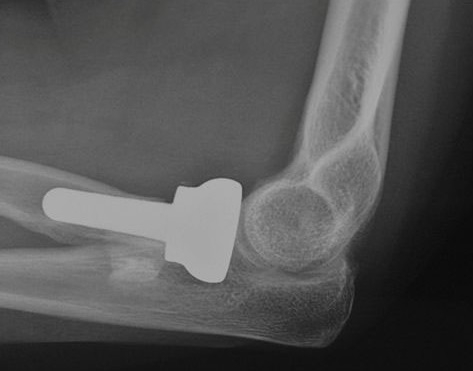.jpg)
Departamentul de Chirurgie Ortopedica al clinicii Centrokinetic este dedicat sa ofere ingrijire excelenta pacientilor si educatie de exceptie pentru medicii tineri, in domeniile chirurgiei ortopedice si a medicinii musculo-scheletice.
Departamentul este format din medici ortopezi, cu activitate chirurgicala vasta, supraspecializati in traumatologie sportiva, chirurgia gleznei si piciorului, artroplastia de genunchi si sold, chirurgia ortopedica pediatrica.
Centrokinetic acorda o mare importanta intregului act medical: investigatii necesare diagnosticarii corecte (ecografie, RMN), interventii chirurgicale si recuperare postoperatorie.
Descopera centrul de imagistica cu RMN deschis in cadrul clinicii noastre. Centrokinetic dispune de un aparat RMN de ultima generatie, dedicat afectiunilor musculo-scheletale, de la nivelul membrelor superioare si inferioare. Aparatul RMN este deschis, astfel incat si persoanele care sufera de claustrofobie pot face aceasta investigatie. Durata de examinare este in medie de 20 de minute.
Fractura de cap radial se produce prin incarcare axiala directa, datorita stresului aparut intre capul radial si capitulum, prin devierea cotului in valg (intre brat si antebrat apare un unghi obtuz deschis extern) sau intr-o luxatie de cot.
Cel mai frecvent apare in urma unui traumatism prin cadere cu mana si cotul in extensie. Fracturile izolate de cap radial sunt usor de tratat. Insa cheia succesului in tratamentul fracturii de cap radial este identificarea si tratarea afectiunilor asociate. Acest principiu este foarte important daca fractura este cu deplasare sau daca implica tot capul radial. In cazul unei fracturi complexe de cap radial, trebuiesc investigate si diagnosticate fractura asociata de capitulum sau ruptura ligamentului colateral medial al cotului, de aceea consideram ca este absolut obligatoriu sa investigam cotul prin RMN inainte de interventia chirurgicala.
Indicatia de tratament chirurgical
In functie de tipul de fractura, de gradul de cominutie si de gradul deplasarii fragmentelor, in prezent au indicatie absoluta de tratament chirurgical fracturile simple cu minima deplasare, care blocheaza miscarea de pronatie-supinatie, fracturile cominutive si fracturile cu deplasare.
Factorii care influenteaza tratamentul chirurgical, tehnica aleasa si momentul operator, sunt:
- gradul de cominutie al fracturii
Un numar mai mare de 3 fragmente nu au indicatie de reconstructie si fixare cu placa si suruburi sau suruburi individuale, decat daca sunt suficient de mari ca sa poata fi fixate ferm. - gradul de osteoporoza, care uneori nu permite fixarea fracturii si determina medicul sa faca rezectia capului radial
- marimea fragmentelor: daca sunt foarte mici nu pot fi reatasate si fixate ferm, astfel ca se indica rezectia capului radial
- gradul de impactare si deviere a capului radial, care uneori nu permite refacerea anatomica si fixarea ferma a fragmentelor.
.jpg)
Optiunile tratamentului chirurgical
- Rezectia capului radial: fara inlocuirea lui cu o proteza este inca o metoda foarte buna de tratament, mai ales la pacientii varstnici, dar si in cazul unei fracturi-luxatii de cot, fara fractura de proces coronoid.
- Rezectia capului radial cu inlocuirea acestuia cu o proteza. Din punct de vedere al stabilitatii, inlocuirea capului radial cu o proteza ofera rezultate functionale bune, initial, dar in timp determina artrite repetate, sinovita si in final, artroza.
.jpg)
- Rezectia partiala de cap radial
.jpg)
- Reducerea fracturii si fixarea cu placa si suruburi sau suruburi individuale: are indicatie ori de cate ori exista sansa unei refaceri anatomice a capului radial si a unei fixari stabile, ferme. Este cea mai frecventa optiune de tratament chirurgical.
.jpg)
.jpg)
- Kocher: intre muschiul anconeu si muschiul extensor ulnar al carpului. Este cel mai frecvent utilizat abord, este posterior, relativ simplu si ofera o abordare si o vizibilitate buna intraoperator. Are riscuri mici de a leza nervul interosos posterior. Trebuie protejat ligamentul colateral extern al corului.
- Kaplan: intre muschiul extensor scurt radial al carpului si muschiul extensor comun al degetelor.

Centrokinetic e locul in care vei gasi raspunsuri si solutii clare pentru problemele tale de motricitate. Clinica dedicata afectiunilor osteoarticulare e impartita in urmatoarele departamente specializate:
- Ortopedie, departament compus dintr-o echipa de medici ortopezi extrem de experimentata, condusa de Dr. Andrei Ioan Bogdan, medic primar in ortopedie-traumatologie, cu activitate chirurgicala la Spitalul de Ortopedie Medlife, specializat in traumatologia sportiva si in chirurgia gleznei si a piciorului.
- Ortopedie pediatrica, unde sunt tratate afectiunile sportive ale copiilor (leziuni ligamentare si de menisc), deformarile coloanei (scolioza, cifoza, hiperlordoza) si cele ale picioarelor (hallux valgus, hallux rigidus, picior var equin, picior plat valg, picior cav).
- Neurologie, ce dispune de un departament ultraperformant, unde sunt efectuate consultatii, electroencefalograme (EEG)si electromiografii (EMG).
- Recuperare medicala pentru adulti si copii, departament specializat in recuperarea sportivilor de performanta, in afectiunile coloanei vertebrale, in recuperarea copiilor cu afectiuni neurologice si traumatice. Experienta noastra este extrem de bogata, tratand peste 5000 de sportivi de performanta.
- Imagistica medicala, clinica fiind dotata cu ecograf si RMN, aparate performante dedicate afectiunilor musculoscheletale, si completata de o echipa experimentata de radiologi: Dr. Sorin Ghiea si Dr. Cosmin Pantu, specializati in imagistica musculo-scheletala.
Afla noutatile urmarind conturile de Facebook si YouTube ale clinicii Centrokinetic

PROGRAMEAZA-TE PENTRU O CONSULTATIE
Pentru ca orice tratament in clinica noastra este bazat pe un diagnostic si se face sub urmarire medicala, pentru evaluarea permanenta a evolutiei.PROGRAMEAZA-TE
PROGRAMEAZA-TE
LA O CONSULTATIE
Vezi aici modalitatile de programare si localizarea clinicii
PROGRAMARE

































































































































